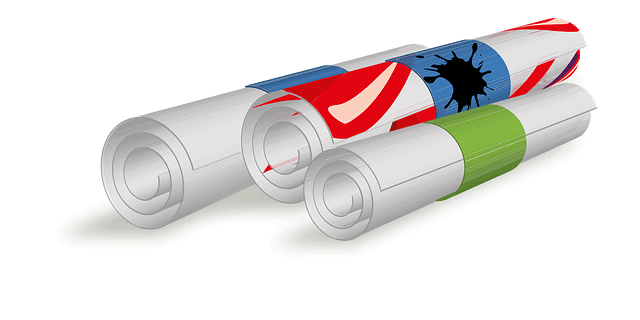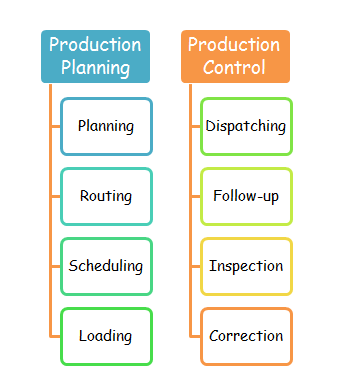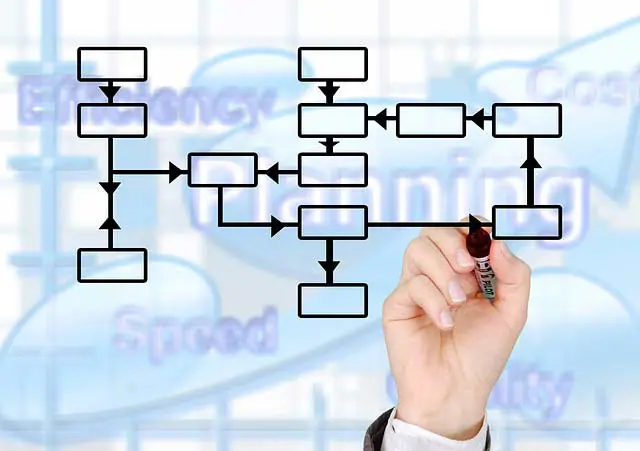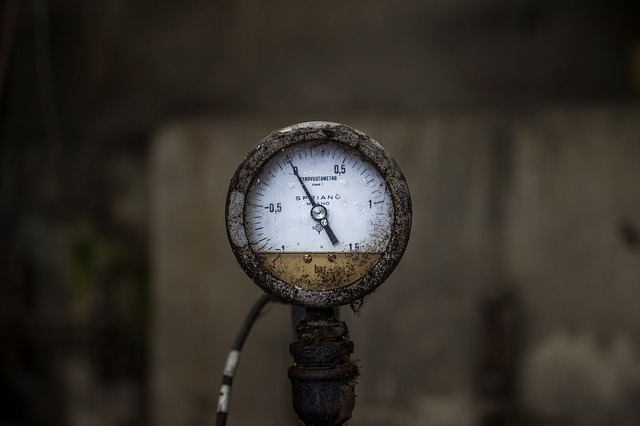Updated April 26, 2023
Introduction to Production Planning and Control (PPC)
It’s your first entrepreneurial venture and you need everything to be perfect. You have decided on the type of business you want to run and you also have the location and the entire setup planned. You have hired a few hands to get you through the managerial aspects of your business and you are leading down that road pretty well. But, it’s now time for you to shift that managerial expertise into the line of production.
The production process harbors a long line of activities including procurement of raw materials, utilization of resources and their allocation in order to produce the semi-finished product. All along the production line you have activities and introductions that bring out a certain value in the process. When it comes to managing this workflow, it does take a bit of hard-work and concentration and a whole new management plan to facilitate its smooth function, and hence, came in the need for a methodology that would enable a manager to put things in the right perspective and order. This methodology is Production Planning and Control (PPC).
In this article, you will be able to explore the basics and all the aspects you need to know about Production Planning and Control (PPC) to push your production line to newer and greater heights.
Production Planning and Control (PPC)
The start of production planning and control is kick-started after you, the entrepreneur, has made the decision regarding the product design and production systems and processes. Production planning and control looks at efficiency and economic benefits of the production line and aims at making these processes design-worthy and lean for effectiveness and great efficiency.
Think of Production Planning and Control (PPC) as the action of tuning a guitar. For planning, you need to tune the guitar and the steps involved are: you need to plan what would be the correct way of placing the guitar while in the right posture, taking the help of a pitch pipe or an analogous/digital tuner and turning the pegs of the guitar to change the tenacity of the metallic strings attached to the guitar front. For control, you need to hear the tune from both instruments and match them at all times so that the tuner or the pipe emits the right sound and you replicate the sound to the necessary string.
In the same way, you have your production management system design for your production planning phase, where you plan the workflow, the resources, the time, the effort, and the cost, and the production control measures will ensure that they are all monitored and checked at all times, for adjustments and adherence. A smooth flowing production line will be your measure of success and the product with high levels of quality will be your attainable target.
There are two components that make up the entire paradigm of Production Planning and Control (PPC):
- Production Planning
- Production Control
Production Planning
Planning your production processes for smooth production is extremely vital for your business. Production within a business is the most hectic and challenging phase as it is here that a product comes to life. With production planning, you are forecasting each step that every machine or resource takes to complete the process of turning a set of raw materials to a semi-finished product. This entire workflow is a long process and needs careful attention at each step.
Planning will involve performing tasks at the right time and under the right circumstance and environment. Production planning enables managers to bring together a good solid piece out of broken shards of glasses and instill in it a great degree of efficiency and effectiveness.
Production planning answers your questions of “what”, “how”, and “when” when it comes to performing a particular task. In this stage, as a manager, you need to put in time and your decision-making skills to the test as you’re designing the product and the production system, which is a combination of the production process and the production planning and control (PPC) techniques. At this stage, you will also be looking at the type of production system you require for your business to be successful. You can choose from:
- Unit production
- Continuous production
- Intermittent production
Characteristics of Production Planning
You need to understand that during production planning, you’re looking at the long-term view of this production system within the business and therefore, you need to ensure that your production planning part contains the objectives of:
- Availability of materials in the right quantities and at the right time, all the time
- Complete utilization of resources and pitch it along with the forecasting that you’ve planned
With this your production planning is taking care of:
- Routing
- Scheduling
- Loading
Routing
This aspect of planning encompasses the exact route that the product or materials will take while on the production line. The entire operation is carefully planned and designed, and their path and sequential order is established and agreed upon. It’s at this stage that the use of machines and the right resource is taken into consideration. The amount and quantity involved in machine-work against manpower is determined and put to plan.
In this case of routing, while planning this stage, it’s essential to understand that this stage encourages project managers to find the best and most economical line of work that the operations need to undergo. Quality management is assured within the tasks of this stage.
Scheduling
This stage is to determine the time required around the process, machines, and resource to complete a particular task, activity, or step. These individual steps are then amalgamated and the total time for a routed operation is determined, giving the project manager enough information to chalk out an efficient plan to create and package products on the line.
Prioritization is another factor that is given due importance in this stage. The workflow and the patterns based on the time and priority is determined here.
Loading
Here is where the execution of the scheduling and routing takes place. The load at each routing point and start-end of an activity or operation are checked for resource help and support. The assignment of individual work personnel takes place in this stage and process efficiency is put to the test. What has already been done is compared to an ideal scenario and simulations are made based on them. The test will reveal the nature of the job and how much faster you can as a project manager can enable the process to go beyond its current capacity.
Production Control
Once the production plan is implemented, keeping the processes under check and in a straight line becomes production control. This ensures that there’s a certain level of monitoring taking place over the production workflow and the resources that are working in keeping with the workflow. Adjustments in case of any deviation can be made during production control. Steps and measures are anticipated and put into action for production to always take the route intended and established during the production planning phase.
Production control makes use of many control techniques that enable the production unit to achieve the optimum level of performance that an organization is looking forward to. This ensures that there’s a qualitative outlook at things within a business and can help the business push their targets higher and higher each year. Production control aims at:
- Regulating production inventory management
- Completing and optimizing utilization of resources and time
- Carefully organizing the schedule driving production
Production control ensures that the processes designed and defined during production planning are staying true to its course of action. Control measures take care of this fact and produce results on the outcome after the stakes are checked. The process that production control follows looks something like this:
- Dispatching
- Follow-up
- Inspection
- Correction
Characteristics of Production Control
Robust production control can help you earn the following benefits:
- Cost-effectiveness as part of the production process
- Narrow down the wastage that takes place on the production line
- Maintenance of high quality throughout the production life cycle
- Smooth functioning of the production process
It is dependent on the following factors for smooth functioning:
- Size of the operation to be conducted
- Nature of the operation to be conducted
- Type of production to be conducted
There are various tools and techniques that can be employed by production managers to provide a conducive environment for production control to take place. These tools and techniques are as follows:
- Control boards
- Communication and monitoring systems
- Control graphs
- Control charts
- PERT, CPM tools
The planning completed, now as a project manager and entrepreneur, your production lines need a proper and all-encompassing control system in place to check and adjust the operations.
Dispatching
This is where the real work begins and the implementation of the plans are made into real-life production. During the dispatching phase, you have production orders issued to commence the operations and fuel the onward movement of the production line. Each operation is conducted as per the plan, schedule, and shortest possible route for the product to come alive.
Workstation management and use of resources are put to play and dispatched on duty. The time, effort, and the cost for completion of each task or activity is recorded and each of the routes of these tasks are then ready for the next stages involved in production control.
Follow-up
We won’t know the progress of a particular process that has been set up unless we follow up on the process. During such process and operation follow-ups, you need to look out for possible or visible bottlenecks that can hinder the smooth flow of your production line at any stage. The plans here are considered to be the blueprints against which the operations and its proceedings are checked for any sort of delay or possible deviations.
The routing plans are checked thoroughly and the schedules and priorities are mapped against their respective blueprints, and any error or defects are reported immediately through the systems put in place. These different errors and deviations are then studied and analyzed only to provide suitable and remedial actions to avoid the reoccurrence, for smooth functioning.
Inspection
Timely audits and inspection bouts need to be conducted to ensure that everything under the production scanner was adhering to quality standards and maintaining overall quality of the product.
Correction
Once the previous steps are undertaken and they yield results, the plans of action and the actions on those reported anomalies or deviations take place and the processes are corrected to an extend of adjusting routes, rescheduling the work and time at which they are performed or the priority of the tasks, or even performances of individuals work personnel. Workloads are maintained and any rectification is made on these correction rounds. Methods, tools, machinery, and techniques are employed to make the process of production a completely unhindered one.
Benefits of Production Planning and Control (PPC)
- High productivity of personnel and machinery as the inputs and the outputs (end-to-end) are taken care of.
- Idle time is cut to the minimum and more emphasis is allowed on the process flow and its smooth functioning
- Performance can be monitored and effective feedback can be given to employees or machines can be tended to
- Proper utilization of machinery and the workforce is encouraged and followed
- Work among personnel is regulated so as to avoid underloading or overloading of work
- Optimum levels of co-ordination is maintained on the production line through the implementation of Production Planning and Control (PPC)
- Cost is effectively controlled and managed with sincere planning and control of wastage on the production line
- Quality achieved is of the highest level and is maintained throughout the workflow
Limitations
- This system is solely based on assumptions; if the assumptions are proved to be right, you have a successful implementation, else, your production planning and control (PPC) is a failure
- This system can face rigidity from employees through their behavior
- Production Planning and Control (PPC) is difficult for small-scale firms and organizations as it is extremely time-consuming
- The initial setup cost is extremely high and won’t be affordable to many organizations
- Highly dependent on external factors such as changes and updates in technologies, government rules and regulations
Recommended Articles
This has been a guide to Production Planning and Control (PPC). Here we also discuss Production Planning and Production Control along with benefits and limitations. You may also have a look at the following articles to learn more –






